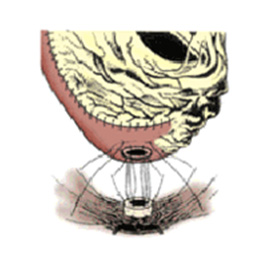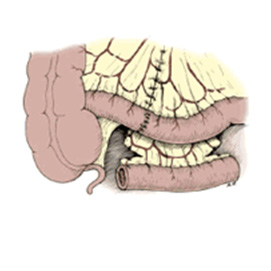Robotic Partial Cystectomy
Cystectomy is the surgical removal of the bladder, and a standard procedure to treat invasive bladder cancer. A partial cystectomy is surgery performed to remove only a portion of the bladder, while the rest of the bladder functions normally. It is indicated when bladder cancer is superficial or has minimally invaded the muscle layer.
Robotic technology has made it possible to perform procedures such as the partial cystectomy minimally invasively. Robotic partial cystectomy is associated with less pain and a quicker recovery than open partial cystectomy. Precision is important in partial cystectomy to ensure complete removal of the tumour and minimal damage to surrounding tissue.
The procedure is carried out through a series of button-sized incisions through which a telescope and minute surgical instruments are inserted. The surgery is performed with robotic arms, which your doctor operates from a computer system with the help of a 3D imaging system. The robotic arms are highly precise and manoeuvrable, allowing your doctor to perform the operation with ease and accuracy.
About the Robot
The robotic procedure involves two machines, a control unit or the surgeon’s console and a patient unit. The surgeon sits at the control unit, away from the operating table, and controls the movement of the four robotic arms of the patient unit, present near the operating table. One of the robotic armsholds and positions a 3D high definition camera through the incision in the operated area providing images of the operation site to the surgeon at the control unit. These images are high resolution 3D images, superior to the 2D images in the laparoscopic approach. Moreover, the images can also be magnified by 10 to 12 times. The other three robotic arms are used to hold small miniature instruments, which are used for the surgery. These instruments are introduced through the tiny (7 mm) incisions over the patient’s abdomen. These miniature instruments are more flexible compared to the long handled rigid instruments of the traditional laparoscopic surgery. A wide range of these instruments are available to the surgeon to perform various specialised surgical tasks.
The robotic arm cannot be programmed to do the surgery on its own. Instead, it translates the surgeon’s hand movements, at the control unit, into precise movements of the micro-instruments in the operation site, minimising tremors that may occur from unintended shaking of the surgeon’s hands. The enhanced vision and superior control of the micro-instruments helps in precise removal of the cancer while limiting damage to the nerve fibres and the blood vessels near it.
Urinary Diversion
Once the bladder is removed, the method of urine drainage needs to be considered. Urinary diversions are reconstructive procedures that enable the patient to manage urine discharge.Several options exist and depend on the overall health of the patient, the extent of cancer, and an individual’s motivation and active participation in their care.
Types of Urinary Diversions
Ileal Conduit is the most common diversion. It involves creating a ‘pipe’ from a segment of bowel which is inserted in place of the bladder. This conduit transports urine from the ureters to the skin or stoma (a small opening) where it is emptied into a bag attached to the skin. This can be emptied at various intervals.
It has the disadvantages of requiring an ostomy bag, but is a shorter and simpler operation with the least chance of post-operative or long-term complications.
In selected patients, a portion of the intestines is used to create a new bladder or neo-bladder. The ureters are joined to one end of the neo-bladder and the other end is connected to the remaining portion of the urethra. The new bladder is constructed in such a way that it will provide a reservoir to store urine and control urine flow. With this method, urine is passed normally through the urethra, however the neo-bladder does not work exactly like the old bladder. This is major surgery and requires much planning and recuperation time. The suitability of this procedure should be discussed with Prof Patel.
Most patients will gain control of their urine within a few months.

Neobladder: Connection of new bladder to existing urethra. (image adapted from Campbell-Walsh Urology)

Ileal Conduit: Short segment of small intestine connecting ureters to skin. (image adapted from Campbell-Walsh Urology)

